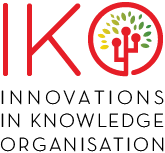This short video captures the key takeaways from three of our expert panellists on the qualities of a good business case for KM/KO: Tom Reamy, Cor Beetsma and Barry Byrne.
This video contains some key insights about Governance for knowledge organization, from Neo Kim Hai and Ahren Lehnert, following the Expert Panel on Governance that they participated in.

 RSS Feed
RSS Feed